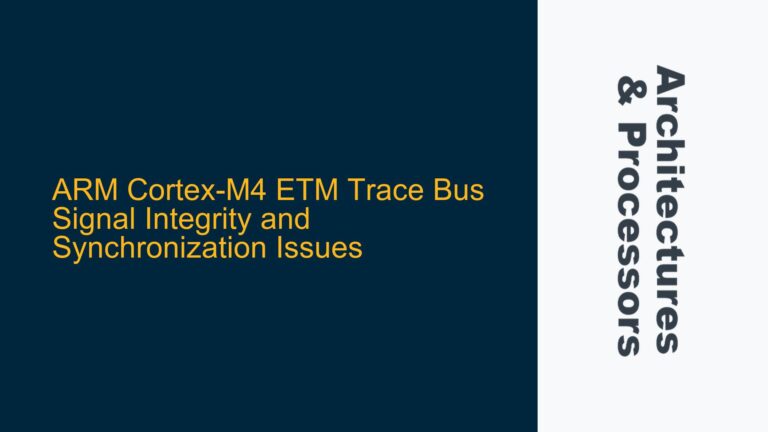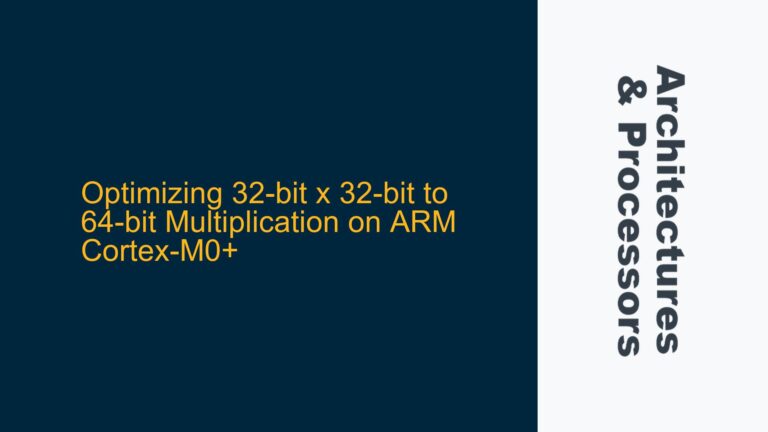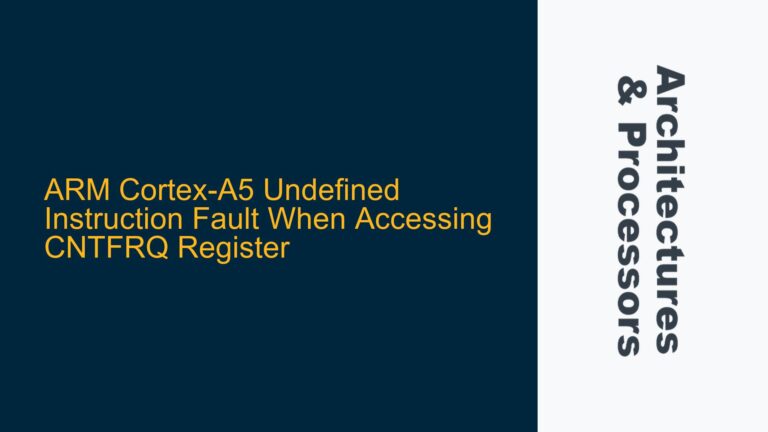ARM Thumb-2 Instruction Set and Register Access Constraints
The ARM Thumb-2 instruction set is a hybrid 16/32-bit instruction set that combines the code density advantages of the original Thumb instruction set with the performance benefits of the ARM instruction set. One of the key characteristics of the Thumb-2 instruction set is its ability to access all 16 general-purpose registers (R0-R15) in certain scenarios, unlike the original Thumb instruction set, which was limited to accessing only the lower eight registers (R0-R7). However, this full access is not universally available across all Thumb-2 instructions, and understanding the constraints and optimizations related to register access is crucial for efficient firmware development.
The Thumb-2 instruction set was introduced to address the limitations of the original Thumb instruction set, which was designed primarily for code density rather than performance. The original Thumb instruction set used 16-bit instructions, which limited the number of registers that could be addressed directly. Specifically, only the lower eight registers (R0-R7) could be accessed by most Thumb instructions, while the upper eight registers (R8-R15) were either inaccessible or required special instructions to access. This limitation was a trade-off for achieving higher code density, which was particularly important for embedded systems with limited memory resources.
With the introduction of Thumb-2, ARM expanded the instruction set to include both 16-bit and 32-bit instructions, allowing for more flexible register access. However, the extent of register access still depends on the specific instruction being used. Some Thumb-2 instructions can access all 16 registers, while others are still restricted to the lower eight registers. This variability in register access is a result of the encoding constraints of the Thumb-2 instruction set, which must balance the need for compact code with the desire for greater functionality.
The ARM Architecture Reference Manual (ARM ARM) provides detailed information on the encoding and behavior of Thumb-2 instructions, including which instructions can access which registers. For example, 32-bit Thumb-2 instructions generally have more flexibility in register access compared to 16-bit Thumb-2 instructions. This is because 32-bit instructions have more bits available for encoding register operands, allowing them to address a larger set of registers. In contrast, 16-bit instructions have fewer bits available for encoding, which limits the number of registers that can be addressed directly.
Understanding these constraints is essential for optimizing code for ARM processors. By carefully selecting instructions that can access the full range of registers, developers can reduce the need for additional instructions to move data between registers, thereby improving performance and reducing code size. Additionally, understanding the limitations of register access can help developers avoid potential pitfalls, such as inadvertently using instructions that cannot access the required registers, which could lead to inefficient code or even runtime errors.
Historical Evolution of Thumb Instruction Set and Register Access
The evolution of the Thumb instruction set from its original implementation to Thumb-2 reflects ARM’s ongoing efforts to balance code density and performance. The original Thumb instruction set, introduced with the ARM7TDMI processor, was designed to provide a significant reduction in code size compared to the ARM instruction set. This was achieved by using 16-bit instructions, which are more compact than the 32-bit instructions used in the ARM instruction set. However, this compactness came at the cost of reduced functionality, particularly in terms of register access.
In the original Thumb instruction set, most instructions could only access the lower eight registers (R0-R7). This limitation was a direct result of the 16-bit instruction encoding, which did not provide enough bits to address all 16 general-purpose registers. As a result, accessing the upper eight registers (R8-R15) required additional instructions, such as MOV instructions, to move data between the lower and upper registers. This increased the number of instructions required to perform certain operations, which could negate some of the code density benefits of the Thumb instruction set.
The introduction of Thumb-2 with the ARMv6T2 architecture marked a significant improvement in the functionality of the Thumb instruction set. Thumb-2 introduced a mix of 16-bit and 32-bit instructions, allowing for more flexible register access. Specifically, 32-bit Thumb-2 instructions can access all 16 general-purpose registers, providing greater flexibility and reducing the need for additional instructions to move data between registers. This improvement was particularly important for performance-critical applications, where the ability to access all registers directly can significantly reduce instruction count and improve execution speed.
Despite these improvements, the Thumb-2 instruction set still retains some of the limitations of the original Thumb instruction set. For example, 16-bit Thumb-2 instructions are still limited in their ability to access the full range of registers. This means that developers must be aware of the specific limitations of the instructions they are using and plan their code accordingly. In some cases, it may be necessary to use 32-bit Thumb-2 instructions to achieve the desired level of register access, even if this results in slightly larger code size.
The historical evolution of the Thumb instruction set highlights the trade-offs involved in designing instruction sets for embedded systems. While the original Thumb instruction set prioritized code density, Thumb-2 strikes a balance between code density and performance, providing developers with greater flexibility in optimizing their code. Understanding this evolution is essential for developers working with ARM processors, as it provides context for the design decisions that underlie the Thumb-2 instruction set and informs best practices for code optimization.
Optimizing Code for Thumb-2 Register Access and Performance
Optimizing code for Thumb-2 register access involves understanding the specific limitations and capabilities of the instruction set and using this knowledge to minimize instruction count and maximize performance. One of the key strategies for optimizing Thumb-2 code is to make use of 32-bit Thumb-2 instructions whenever possible, as these instructions provide greater flexibility in register access. By using 32-bit instructions, developers can reduce the need for additional instructions to move data between registers, which can improve both performance and code density.
Another important strategy for optimizing Thumb-2 code is to carefully plan the use of registers. Since 16-bit Thumb-2 instructions are limited to accessing the lower eight registers (R0-R7), it is often beneficial to prioritize the use of these registers for frequently accessed variables and operands. This can reduce the need for additional instructions to move data between the lower and upper registers, which can improve performance and reduce code size. In some cases, it may be necessary to use 32-bit Thumb-2 instructions to access the upper registers, but this should be done judiciously to avoid unnecessarily increasing code size.
In addition to optimizing register access, developers should also consider the impact of instruction selection on performance. For example, some Thumb-2 instructions may have different performance characteristics depending on the specific processor being used. By understanding the performance characteristics of different instructions, developers can make informed decisions about which instructions to use in different situations. This can help to maximize performance while minimizing code size and power consumption.
Finally, developers should be aware of the potential impact of compiler optimizations on Thumb-2 code. Modern compilers are often able to optimize code for Thumb-2 register access and performance, but this may require careful configuration and tuning. By working closely with the compiler and understanding its optimization capabilities, developers can ensure that their code is optimized for both performance and code density.
In conclusion, optimizing code for Thumb-2 register access and performance requires a deep understanding of the instruction set and its limitations. By carefully planning the use of registers, selecting the appropriate instructions, and working closely with the compiler, developers can achieve significant improvements in both performance and code density. This is particularly important for embedded systems, where resources are often limited and performance is critical.






